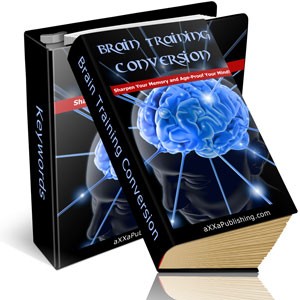 License Type: Private Label Rights
License Type: Private Label Rights  File Size: 9,615 KB
File Size: 9,615 KB File Type: ZIP
File Type: ZIP
 SKU: 22642
SKU: 22642  Shipping: Online Download
Shipping: Online Download
Ebook Sample Content Preview:
As a process of stimulating the natural creation of the brain's development in how does an enriched environment that stimulates brain enhancement in the cortex contribute to the creation of the brain.
Given that an “enriched environment” (that is, an environment that provides proper stimuli for brain development) leads to both a qualitative and quantitative change in the cerebral cortex, we can easily view this as a sort of mechanically induced evolution of the brain. Studies conducted by scientists on a variety of lab rats indicated that these rats, when placed in these enriched environments that were designed to give adequate stimulation in the areas considered beneficial to the desired regions of the brain, the cortex in the rats was noted to undergo tangible qualitative and quantitative change.
What do the changes the rats underwent in terms of cortex growth and improvement signify as they relate to the evolution of the mammalian brain?
The importance of this qualitative and quantitative change in the cortex as a result of environmental enrichment can be seen when we consider a few facts about the cerebral cortex (also sometimes called the neocortex). Whatever evolution means, perhaps its most tangible result is the cortex; it is the end result of the tendency of creatures to develop their nervous systems as they increase in complexity. In the case of vertebrates, this has meant a steady shift to the top or uppermost part of the nervous system. In the earliest vertebrates, this meant a swelling of nervous tissue at the top of the spinal cord. As creatures evolved, this swelling increased in complexity, including first a hindbrain, then a midbrain or limbic brain, then a forebrain. Only in higher mammals does there develop a new evolutionary structure, the cerebral cortex, which gains in size and importance as we go up the evolutionary ladder.
What does this mean as it relates to the significance of the cortex and its possible functions in brain enhancement?
The cortex is, then, in evolutionary terms, something very new, very different; it is the seat of our so-called higher functions. These functions include the detection of all the features of our sensory systems, as well as the learning and association of new features and the learning of all kinds. It also includes memory and recall of sequences of events that happened in our pasts, the patterning of elaborate programs of voluntary muscle actions and the formation and comprehension of speech. It includes, too, creativity and appreciation in all manners of art and of course all sensations and consciousness.
All right, but how does this relate to brain enhancement itself?
- File Size:9,615 KB
- Total Downloads:2
- License: Private Label Rights
- Category:Ebooks
- Tags:2010 Ebooks Private Label Rights








